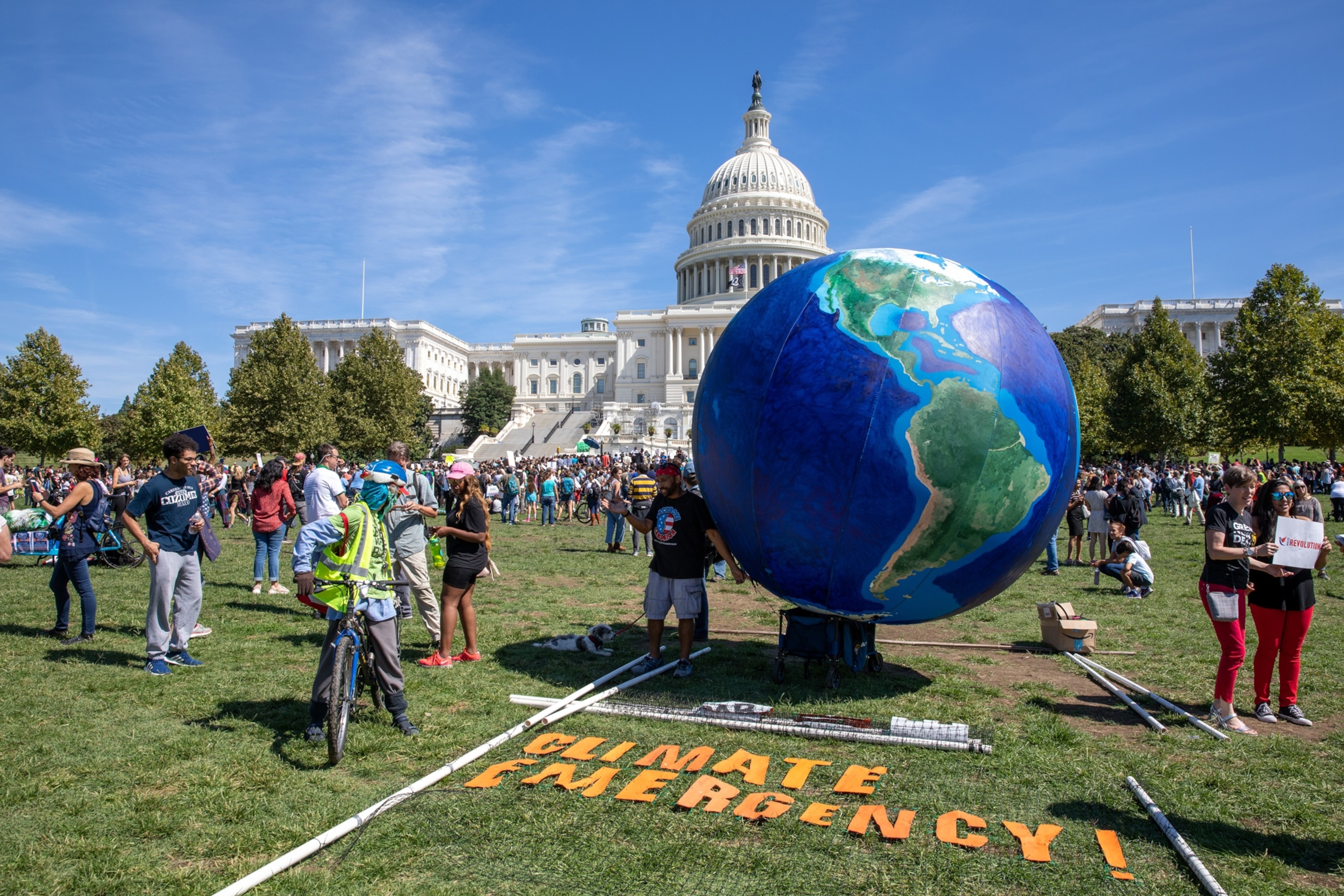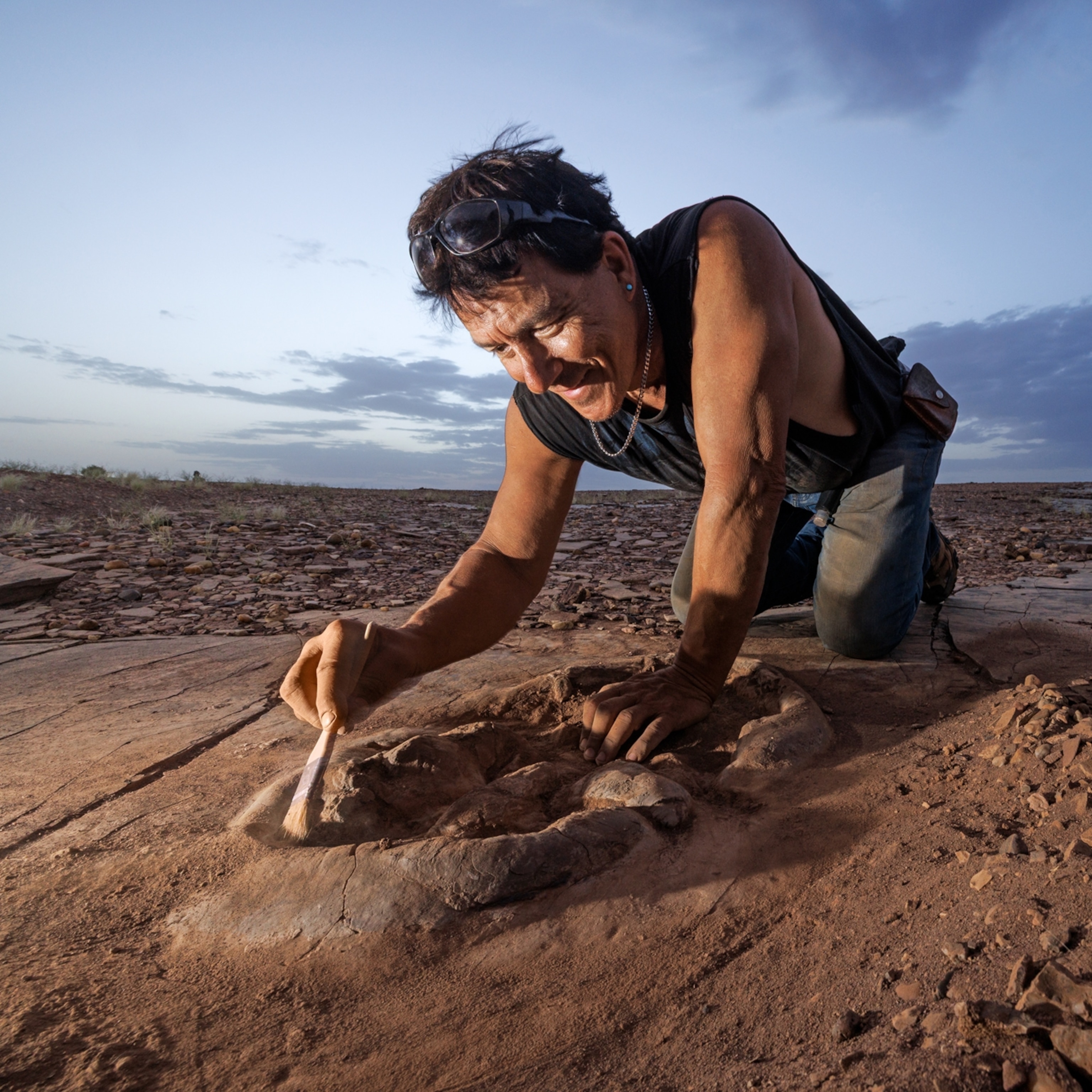
Latest: Trump's and Biden's environmental policy promises and actions
A running list of the 2020 presidential candidates' dueling visions for U.S. environmental policy.
Environmental policy is among the many issues that American voters will soon consider as they cast their ballots in the 2020 presidential election, and for some of them it will loom large. According to a recent survey by Yale University and George Mason University researchers, for example, some two thirds of registered voters say they are worried about global warming and would support a carbon tax to combat it.
Republican President Donald Trump and Democratic presidential nominee Joseph Biden have offered voters vastly different ideas about how to tackle climate change, limit pollution, and protect endangered species.
For the first two years after Trump took office, National Geographic kept a running list of the changes his administration made to environmental policy, from the decision to withdraw from the Paris climate accord to rollbacks of coal regulations. Now that the campaigns are underway, we’re tracking what both candidates are doing—and what they’re promising to do—if elected to serve for the next four years.
Trump allows logging in Alaska’s Tongass National Forest
October 28: The Trump Administration, as of Thursday, October 29, is opening Alaska’s Tongass National Forest—the largest national forest in the U.S. at 16.7 million acres—to logging and development. The new rule will allow logging companies to build roads and cut trees across 9.4 million acres of land and, as the Washington Post notes, “is one of the most sweeping public lands rollbacks Trump has enacted.”
As National Geographic reported earlier this year, the pristine Tongass National Forest is a climate sanctuary, the majority of which is old growth forest—meaning it has existed undisturbed for long periods and stores enormous amounts of carbon. But while the Trump Administration and Alaska governments have sought to open this land, one Native-owned logging corporation has found a way to profit from the forests—by leaving them standing.
Trump seeks to expand rare earths mining
September 30: Trump has signed an executive order declaring a national emergency in the mining industry in hopes of expanding U.S. production of rare earth minerals. According to Bloomberg, the decision marks the administration’s attempt to reduce dependence on China, which supplied 80 percent of U.S. imports of rare-earths compounds and metals last year. As National Geographic explained in 2011, rare earths are essential components of high-tech devices from cell phones to laptops—and are not actually rare, just scattered. China’s global monopoly on the supply of these metals has sent nations such as the U.S. scrambling to find independent sources. But U.S. environmentalists worry about the potential environmental impacts of increased rare-earth mining given the extensive water and soil pollution the practice has caused in China.
Trump and Biden wrangle over climate change at first debate
September 29: At the first presidential debate on Tuesday evening, Trump said he believes “to an extent” in the evidence that human greenhouse gas emissions are contributing to global warming, but defended his administration’s decision to roll back fuel emissions standards and withdraw from the Paris Agreement by decrying them as bad for the economy. He also argued that forest management, rather than climate change, is responsible for the record-breaking wildfires seen on the West Coast.
Biden, meanwhile, reiterated his pledge to rejoin the Paris Agreement, promised to create jobs in renewable energy with his $2 trillion climate plan, criticized Brazil’s deforestation of the Amazon, and argued that investing in the fight against climate change is a better investment than spending billions of dollars in recovering from its effects—such as the record wildfires on the West Coast. Biden also distanced himself from the Green New Deal, a progressive Congressional proposal for tackling climate change, though The Hill notes that his campaign has called it a “crucial framework for meeting the climate challenges we face.”
Trump extends drilling ban to offshore wind
September 29: Bloomberg reports that the Trump Administration is extending its moratorium on offshore drilling off the coasts of Florida, Georgia, and the Carolinas, to include renewable energy. The statement drew criticism from wind energy advocates as threatens offshore wind development. As National Geographic has reported, offshore wind projects have gained momentum in recent years as wind energy is seen as key to cutting greenhouse gas emissions. In 2012, the European Commission’s Joint Research Centre found that wind and solar energy had accounted for nearly two-thirds of emissions reductions in the European Union.
Trump blames wildfires on forest management, not climate change
September 14: During a visit to California in the midst of its record-setting wildfire season, Trump blamed the crisis on forest management policies rather than climate change. He argued for culling forests and raking leaves instead to prevent wildfire spread. As National Geographic has reported, however, the evidence is clear that “climate change has inexorably stacked the deck in favor of bigger and more intense fires across the American West” by making fire seasons hotter, drier, and longer.
Trump expands ban on offshore drilling
September 8: During a campaign event in Florida, Trump announced a 10-year moratorium on oil-and-gas drilling off the coasts of Florida, Georgia, and South Carolina. According to ABC News, offshore drilling in the Atlantic is a significant concern for voters in coastal states. The announcement is a reversal of the president’s previous actions. As National Geographic reported in 2018, the Trump Administration planned to expand offshore drilling to more than 90 percent of waters in the Pacific, Gulf of Mexico, Arctic, and Atlantic—where the practice has been banned since 1981.
Trump Administration relaxes rules on coal plant wastewater
August 31: As part of its push to rescue the coal industry, the Trump Administration has finalized its rollback of Obama-era rules for how coal-fired power plants dispose of toxic wastewater. The Environmental Protection Agency announced the new rule, which The Hill reports weakens the regulations for dealing with residue from burning coal and smokestack filters. It also gives power plants an additional two years to implement the regulations. As National Geographic has reported, coal-burning power plants supply the U.S. with half its electricity—but at a high cost: These plants emit pollutants such as sulfur dioxide and nitrogen oxide, and are also responsible for nearly two billion tons a year of the carbon dioxide that drives climate change.
Biden states he will not ban fracking
August 31: Biden stated unequivocally that he will not ban fracking, the controversial practice of using a high-pressure injection of water, chemicals, and sand to extract oil and gas from the earth. In response to his rival’s recent claims that he would ban the practice, Biden stated during a campaign event in Pittsburgh, Pennsylvania, “I am not banning fracking. Let me say that again. I am not banning fracking, no matter how many times Donald Trump lies about me.” According to the Washington Post, Biden has said he will not allow new fracking on federal lands, but he will allow existing fracking to continue and allow all fracking on private land, where most of it takes place. As National Geographic has reported, fracking has been linked to a “massive” increase in the methane emissions that are heating up the planet.
Biden pledges support for ethanol
August 25: Reuters reports that the Biden campaign has made its strongest commitment yet to the renewable fuel standard, which requires oil refiners to blend biofuels into their fuels or purchase credits from those who do. "A Biden-Harris Administration will promote and advance renewable energy, ethanol, and other biofuels," Biden said in a statement. The oil industry generally opposes the renewable fuel standard, while the agricultural industry supports it. In the United States, most biofuel is ethanol made from corn. The extent to which it provides environmental benefits, taking into account greenhouse gas emissions as well as fertilizer and pesticide use on Midwestern farms, is a subject of long-running debate, as National Geographic has reported.
Trump Administration delays Pebble Mine permit
August 24: In a reversal, the Trump Administration has delayed a permit for the Pebble Mine, a proposed Alaska gold and copper mine it has previously supported, noting that it could have “substantial environmental impacts” within the Bristol Bay watershed. As National Geographic has reported, the region is one of the country’s “richest and most unique remaining stretches of wilderness,” home to the largest sockeye salmon fishery in the world. Opponents—which include Donald Trump, Jr., who fishes in the area—fear the mine would pollute and destroy the species’ pristine habitat. The Washington Post reports that the Trump Administration is requiring the mine to take extensive action to offset its environmental harm. It’s unclear whether the mine will be able to meet these requirements, rendering its future uncertain.
Trump finalizes plan for drilling in ANWR
August 17, 2020: The Trump Administration hopes to open part of the Arctic National Wildlife Refuge to oil and gas drilling soon. The Alaskan refuge is rich in biodiversity—and possibly oil as well. The New York Times reports that the Interior Department expects to start auctioning off leases by the end of 2021, and possibly before the end of this year, to companies interested in drilling in ANWR.
Trump Administration rolls back methane emissions rule
August 13, 2020: Oil and gas companies will no longer be required to monitor and limit methane leaks in their operations, Environmental Protection Agency Administrator Andrew Wheeler announced. As NPR reports, environmental advocates have already announced plans to challenge the new rule, which rolls back a policy that was implemented in 2016 under President Barack Obama. Methane is a far more potent greenhouse gas than carbon dioxide; the level in the atmosphere has risen significantly in recent years, and emissions from the oil and gas industry have been fingered as a main reason. Research published earlier this year indicated that those emissions are much higher than once thought.
Biden opposes Grand Canyon uranium mining
August 7, 2020: In a statement to The Arizona Republic, Biden declared his opposition to uranium mining in the lands surrounding the Grand Canyon. Uranium mining has long been a contentious issue in the region, where decades of mining have poisoned the groundwater and threatened Native American ancestral lands. Although the Obama administration placed a 20-year moratorium on new mines in 2012, environmental groups are seeking to prevent the reopening of the Canyon Mine, which preexisted the moratorium.
Biden announces $2 trillion climate plan
July 14, 2020: Presumptive Democratic presidential nominee Joe Biden released a $2 trillion plan to combat climate change. The Associated Press reports that among the former vice president’s proposals are plans to eliminate fossil fuel pollution from U.S. power plants by 2035, update U.S. infrastructure to improve energy efficiency, and address environmental injustice by safeguarding communities that are most exposed to pollution. The plan does not call for an outright ban on coal or fracking.







